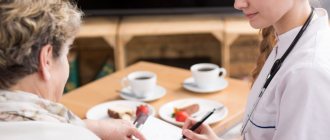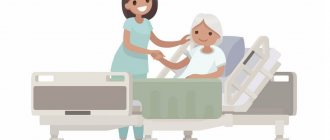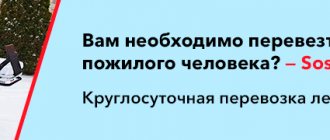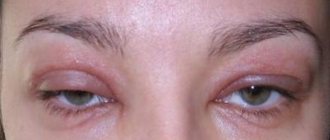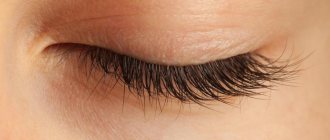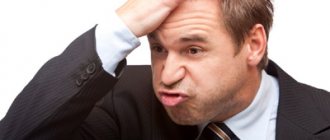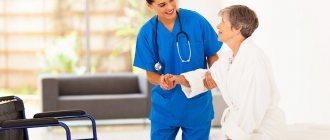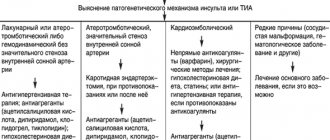Speech impairment due to stroke
Stroke can be hemorrhagic or ischemic.
With a hemorrhagic stroke, too much blood flows to the brain, and arteries may rupture, but with an ischemic stroke, on the contrary, not enough blood flows to the brain. Hemorrhagic stroke is less common, but causes more serious consequences for the patient. But in both cases, the areas of the brain responsible for speech may be damaged in a person.
If speech fails, then the disturbances occurred in the left hemisphere of the brain. With such a stroke, the right side is paralyzed and there is no speech.
Strokes with paralysis on the right side occur more often than on the left. And this is better for the patient, since in this case it is easier to make a diagnosis, since speech disorders are always manifested.
Such disorders are called aphasia. In this case, disturbances can occur in different parts of the brain. Depending on this, the consequences may be different. How to restore speech after an ischemic or hemorrhagic stroke?
Let's look at the types of aphasia and their consequences:
- Amnestic . A person can communicate, but periodically forgets the names of the objects he is talking about.
- Semantic . In this case, you need to talk to the patient exclusively in simple sentences; he simply will not understand complex ones.
- Sensory . A complex type of aphasia in which the patient does not understand speech at all. For him it comes down to a set of sounds. At the same time, he practically cannot understand the meaning of what was said.
- Motor . A person understands everything, but cannot say anything coherently, confuses sounds and words, or gets stuck on one sound combination.
- Total . The patient does not understand anything, does not recognize anyone, cannot say anything. Most often, this phase occurs immediately after a stroke. After some time, it can turn into motor.
Main types of speech disorders
There are two main forms of disorders - aphasia and dysarthria (the first is more common). With aphasia, there is a deterioration in speech functions as a result of damage to the speech centers in the brain. It can be complete (when speech is completely absent) and partial. The first time after a stroke is often accompanied by a lack of speech, but thanks to high-quality rehabilitation measures the situation improves.
There are six main forms of aphasia:
1. Motor. It is divided into two main types - afferent and efferent. In the case of the first, a person experiences difficulties in choosing the articulatory posture necessary to pronounce specific sounds. With efferent speech, instinctive speech is preserved, but repetition is severely impaired. Patients are bothered by kinetic apraxia, which makes it impossible to switch from one position to another.
2. Dynamic. The main characteristic speech defect is severe difficulty or inability to actively speak. The patient is unable to formulate a statement normally because external and internal speech is impaired. Echopraxia often appears when a person automatically repeats his interlocutor’s words and movements.
3. Touch. It is divided into three main types: cortical, subcortical and transcortical. In the first case, the patient does not understand or pronounce sounds. In the second case, the transmission of impulses from the centers that perceive sound information is distorted. With the third, the ability to perceive light speech structures is preserved, but writing is impaired and visual function deteriorates.
4. Semantic. Patients have a complete lack of understanding of complex speech formulations that reflect spatial relationships. Difficulties often arise in completing tasks containing complex syntactic structures. Patients are able to forget the names of familiar objects (for example, spoons, tables). Reading is slow, acalculia may develop. This is a neuropsychological symptom that manifests itself as a counting disorder
5. Acoustic-mnestic. This form is characterized by difficulties associated with retaining in memory information perceived by a person by ear. Many patients are not even able to repeat after a speech therapist a simple sequence consisting of 3-5 words, or to grasp the meaning of speech at a fast pace or when talking with two or more people at once.
6. Total. This form is characterized by a complete absence of speech (due to damage to many speech areas of the brain). This is the most severe form, which requires long-term correction with drug therapy and exercises.
Dysarthria is a speech disorder associated with impaired mobility of the organs of articulation (tongue, palate and lips). It can develop when various structures are affected, but most often the cranial nerves involved in the functioning of the speech muscles are affected. Dysarthria consists of difficulty pronouncing certain words or sounds (speech is sluggish and slurred).
Can speech be restored after a stroke and how quickly will this happen?
No one can give a 100% guarantee that the patient will be able to speak at all. But if you act quickly, correctly, follow all the recommendations of specialists, create an atmosphere of patience, love and care around a sick relative, support him as much as possible in his desire to recover, then he has a much better chance of quickly recovering his speech loss.
Simple speech problems can be solved in 2–6 months with special regular training and exercises. If the degree of violation is greater, then more time will be required.
Sometimes this can last up to several years. A forecast of 5-10 years is considered a period after which changes for the better are hardly possible. However, miracles of recovery happen, but they most often lie in the realm of intangible reality.
People say, “Houses and family walls heal.” This relates to the question of how relatives of a stroke patient should behave. The first questions they ask the doctor are: “Is speech restored after a stroke? Is it even possible to restore speech after a stroke? How long does it take for speech to be restored after a stroke? Relatives can be understood. But a lot depends on their behavior, on their actions.
Here are the usual recommendations from doctors to the patient’s relatives:
- The patient must feel that his family needs him, that he is valuable to her, that his relatives believe in him, love him, sincerely wish for his recovery and do not doubt it at all. In this case, he will have additional motivation to get back on his feet as quickly as possible. This means there will be energy for this.
- You need to constantly talk with the patient and in his presence. Then he will feel involved in the family. But the most important thing: if the topic is important to him, he will try to talk.
- It’s good if his favorite music, the songs he used to sing, are played in the house. The inner desire to sing along can well stimulate the awakening of his speech impulses.
- But it is better to remove excess noise, variety and volume of sounds so as not to overload the patient. You need to talk to him quietly, calmly, without explosive emotions. Surround him with your kindness. At the same time, there is no need to emphasize every time that he is terminally ill.
- Relatives need to have maximum patience, since they are the ones who must become constant assistants for the patient when performing the exercises that the speech therapist will show. And under no circumstances should you react with irritation if you can’t do the exercise.
How long does it take for speech to be restored?
Rehabilitation of speech functions usually begins a week after the rupture of a blood vessel in the brain, provided that the patient’s condition is stable. However, there are situations when the patient is not able to start exercising even after a month. One way or another, rehabilitation therapy should begin no later than two months later. Otherwise, it will be much more difficult to regain lost abilities.
As a rule, the rehabilitation process is slow and gradual. Depending on the aphasia, speech recovery may take days, weeks, or months. Sometimes articulation returns in spurts - a person shows no results for a long period of time, but suddenly speech improves dramatically.
It is very difficult to give an accurate forecast regarding the time of speech recovery after a stroke. Rehabilitation is a step-by-step process with a clear sequence. The duration of each stage varies and is individual for each patient. On average, the maximum improvement in speech abilities is observed in the first six months after the illness. The entire recovery period lasts from three to five years.
What to do if a stroke causes loss of speech
How to regain speech after a stroke? Immediately after the first necessary assistance to the patient, it is important to contact a speech therapist.
Only this specialist will be able to correctly assess the degree of speech damage and draw up an effective set of measures for its restoration. The main task of such a complex is to restore speech breathing, voice, articulation, intonation, timbre.
How to restore speech after a stroke at home? You should not self-medicate in this case. Only after the exercises and massages shown by the speech therapist will it be possible to regularly perform them independently at home with the help of relatives.
Dysarthria after stroke
Also, speech dysfunction after a stroke manifests itself in the form of dysarthria, caused by impaired mobility of the muscles of the speech apparatus. Often this disorder is accompanied by problems with swallowing and breathing. There are also very severe cases in which the speech motor muscles are completely paralyzed. This condition is called anarthria.
The following symptoms are typical for this speech disorder after a stroke:
- difficult mobility of articulation organs;
- unintelligible and slurred speech;
- sound distortion;
- slurred speech with hesitation;
- slow or, on the contrary, accelerated rate of speech;
- changes in voice timbre;
- poor intonation, monotony;
- the patient's tendency to grimace.
There are several forms of this speech dysfunction. Each of them is determined by the specific location of the brain injury, as well as the extent of the hemorrhage or the size of the hematoma.
If a patient experiences dysarthria after a stroke, then speech function is restored with the help of a speech therapist. The specialist determines the form of the disorder and draws up a program of exercises, procedures and massage.
Speech therapy exercises to restore speech after a stroke at home
Let us now consider what methods a specialist can offer to restore a patient’s speech, and how they should be applied.
Articulation and breathing exercises
First, the person is asked to simply breathe, then, as he exhales, pronounce certain consonant sounds, one sound per exhalation. After this, while exhaling, all these sounds are pronounced in a row. There are no more than four of them. Sounds can be pronounced while exhaling, also with the chin raised.
Articulation gymnastics after a stroke
It includes exercises for the tongue, lips, voice, and facial muscles.
Exercises for the tongue and soft palate
- Stick your tongue out of your mouth and hold it there for a few seconds.
- Pull it down again and bend it up, hold it for a while.
- Pull it down and direct it first to the right corner of the mouth, then to the left.
- Move the tip of your tongue back and forth across the roof of your mouth.
- Direct your tongue to the right and left cheek.
- Click your tongue, first once, then twice, then three.
- Relax your tongue and, moving it back and forth, lightly bite with your teeth.
- Lick your lips first in one direction, then in the other.
Lip exercises
- Move your lips forward.
- Make a smile with your mouth closed.
- Bare your teeth and raise your upper lip, hold this for a couple of seconds.
- Puff out your cheeks and pump the air from side to side, rolling the air around your mouth.
- Relax your lips and blow through the gap in them.
Voice exercises
Speech gymnastics is performed for ischemic or hemorrhagic stroke.
- We pronounce all the vowel sounds separately, first long, then short, while exhaling. After this, as you exhale, we pronounce all the sounds in a row.
- We say the sound Y only articulatory, without sound, and feel the tension under the chin.
- We pronounce all the vowel sounds in a row, flowing into one another, alternately emphasizing different sounds.
- We pronounce consonant sounds, first unvoiced, separately, then one after another on one exhalation. After this, we pronounce voiced sounds in the same way. We add consonant sounds with vowels into certain syllables, while alternating paired unvoiced and voiced consonants.
All combinations of sounds, their permutations and combinations are determined by the speech therapist.
Tongue twister exercises after a stroke
First, we ask the patient to finish the tongue twister he knows, gradually increasing the number of words he says. If possible, we bring the exercise to perfection.
Exercises for facial muscles
- Raise your eyebrows, lower them, frown, relax.
- Open your mouth wide, try to stretch it, then relax it.
- Smile without opening your mouth.
- Inflate and deflate your cheeks.
- Pull your lips out as if for a kiss.
- Extend your tongue as far as possible in different directions from your mouth.
- Move your lower jaw carefully, first to the left, then to the right, then in a circle.
Speech therapy massage after stroke
After completing a set of exercises, it is necessary to apply a facial massage to each area of the face.
It is important that massage movements are selected only by a specialist. Some areas of the face will need to be relaxed, while others will need to be toned. If you approach this on your own, you can cause irreparable harm.
In addition to massaging the facial muscles directly, they massage the tongue, lips, inner surface of the cheeks, ears, scalp, and hands. All this relieves muscle stiffness and thus liberates speech.
Training with a speech therapist
A speech therapist plays a major role in the rehabilitation process. He conducts tests, assesses the patient's condition and performs appropriate exercises with him. A specialist is present at every session, helps the patient and monitors the correctness of the technique. In the future, constant supervision by a speech therapist is not required; the patient can train independently. It is important to adhere to the following rules:
- complete tasks gradually, starting with simple ones and moving on to more complex ones;
- be sure to avoid overwork (if the patient gets tired, the training will be over);
- maintain regularity of classes (the optimal frequency of classes is 5-7 times a week for half an hour).
The task of a speech therapist is to involve various areas of the brain in the process of speech control. Several complexes are used at once that are aimed at restoration:
- phonetic. They are required to improve facial control. During classes, individual sounds and words are repeated;
- visual. If sensory aphasia is diagnosed, then in classes they use cards with pictures and special aids that encourage finding sequences;
- semantic. They are required to stimulate active thinking. During classes, he is asked to continue the phrase he started or engage in an impromptu dialogue on a specific topic.
Massage
In addition to problems with speech, people who have experienced an acute circulatory disorder experience a number of other complications, in particular, sagging soft tissues (cheeks, corners of the mouth), impaired chewing function and excessive salivation.
Thanks to special massage sessions, it is possible to restore the tone of the facial muscles and significantly improve facial expressions. As a result, it will be much easier for the patient to pronounce words. Only a specialist can find the necessary points for massaging. He knows exactly which areas should be toned and which, on the contrary, should be relaxed.
In addition to facial massage, a person is prescribed a massage of the tongue, lips, cheeks, ears, scalp, and hands. Thanks to an integrated approach, it is possible to relieve muscle stiffness and improve speech.
Articulation exercises
Exercises that will be prescribed on an individual basis allow you to restore speech after a stroke. Their main task is to improve control over facial expressions, tongue and lips. Exercises to develop the muscles of the tongue may look like this:
- movement of the tongue in a circle;
- moving the tongue across the palate;
- tongue clicking;
- biting a relaxed tongue;
- sticking out the tongue, directing first to one corner of the mouth, then to the other;
- moving the tip of the tongue across the palate in different directions.
Lip exercises include smiling with your lips open, curling your lips, pulling them forward, puffing out your cheeks, and rolling air from one side to the other.
Exercises for correct and clear pronunciation include attempts to pronounce consonants alternately (first voiceless, then voiced), then vowels (with one sound flowing into another).
Exercises for facial expressions: include opening the mouth wide (hold for a few seconds and relax), raising, lowering and relaxing the eyebrows, folding the lips into a tube, stretching the tongue in different directions.
These exercises are not universal; the doctor develops a plan for each patient individually. There are many similar exercises. They should be performed in the presence of a speech therapist. To achieve positive results faster, it is recommended to perform the exercises regularly.
Abdominal breathing
Abdominal breathing (with the diaphragm) allows you to increase the volume of inhaled air and improve the saturation of cells with oxygen. As a result, heart function normalizes, blood pressure stabilizes, and anxiety goes away.
The breathing technique is carried out under the supervision of a specialist. There are many exercises, one of which could be this: in a comfortable horizontal position, take a deep breath through your nose, and then slowly exhale through your mouth. This exercise is repeated several times and then made a little more complicated. To do this, adding several sounds while exhaling:
- stretched [f];
- stretched [s];
- stretched [w];
- stretched [x].
The optimal number of repetitions is determined by a specialist.
Drug therapy
In addition to exercise, another important component of the rehabilitation period is drug therapy. Good cerebral circulation plays one of the key roles. A stroke significantly impairs the functioning of brain cells, so doctors prescribe medications that stimulate their functioning. Depending on the nature of the lesion, different groups of drugs are additionally prescribed to restore speech after a stroke. These include:
- Antihypertensive drugs (ACE inhibitors) to stop a strong jump in blood pressure.
- Antidepressants to combat chronic stress and bad mood.
- Nootropics to stimulate regeneration, improve memory, help restore the functioning of brain cells.
- Sedatives to relieve emotional stress and normalize sleep.
- Anticoagulants to reduce blood viscosity and prevent blood clots.
Medicines help to significantly reduce the severity of disorders, but they are not able to completely restore lost functions. A positive result will only come from an integrated approach to solving the problem (due to combination with other methods of therapy).
Features of the doctor’s work with the patient
- The main task of all specialist actions is to disinhibit speech. And for this they use all the capabilities of the patient that he has at the moment. Exercises should not tire the patient. They start with simple elements and last 10-15 minutes. Afterwards the program becomes more complicated and the lesson time increases.
- You need to talk to the patient calmly and slowly so that he understands the speech. If he cannot say anything, then we ask him to nod in response, showing that he understands.
- If the patient has difficulty speaking, you should ask him to make any onomatopoeia that he can make. If he can only pronounce one syllable, then you should choose words that begin with this syllable and let him try to finish them gradually.
- The same is with proverbs and sayings, names of famous films. You need to start a phrase and ask the patient to complete it, either with a word or with a syllable, as best he can. All the words that we usually pronounce automatically should be offered to him to say. These could be days of the week, months, a regular count to ten.
- It’s good to include cards with pictures in your work. You can ask simple questions: “What is this? What is he doing? What is he like? At the same time, it is important to move in these tasks gradually. The nouns are called first. After a while, when this stage has been completed, verbs are added, and only then adjectives.
- Gradually, rehabilitation activities include drawing and writing exercises. First, the person is asked to simply insert the missing letters in the word, then copy the entire word. The tasks gradually become more difficult.
- Exercises based on questions asked to the patient will be good. First, simple questions are asked with an option to answer “yes” or “no.” Afterwards, the questions are complicated so that the question itself contains a monosyllabic answer. And this word is what the patient should say as an answer.
Text of the book “Life after a stroke. A real experience of recovery after a “strike”, accessible to everyone!”
Chapter 4 Practice of restoring body functions
Some recommendations for speech development
A few words about psychological problems after a stroke
The adaptation of a person recovering from a stroke is extremely dependent on the possibility of verbal contact with others. For some, speech and movement are restored in the first weeks and months after the stroke, for others they remain slightly difficult, and for others it can be significantly limited. The degree of restoration of speech and movement largely depends on the extent of damage to the areas of the brain responsible for movement or speech. The stronger the damage, the slower and longer the impaired functions are restored.
First, I will dwell on the possible psychological problems of restoring health after a stroke, which must also be taken into account by the victim’s relatives.
A person who has had a stroke may have problems controlling their emotions. This is expressed in increased excitability and rapid mood changes (anger, tears, laughter, screaming). The victim may feel depressed or easily become confused. He can speak very rudely and vulgarly, which has never happened before.
Depression, anxiety, fear, frustration, anger, hostility, negativity - all these feelings can interfere with recovery.
In this regard, others should not pay attention to inappropriate behavior and, on the contrary, encourage adequate and rational behavior in every possible way. A person in a state of depression should not be left unattended for a long time and left to his own devices. You need to talk to him, even if it seems that he does not hear or understand you. He should be involved in everyday household chores, encouraged to leave the house more often, and invite acquaintances and friends to visit. It is very helpful for people who have had a stroke to communicate with each other, including their families. Features of impaired speech functions
Impaired hearing is usually restored within one to two months after the onset of a stroke.
If half of the visual field of one or both eyes is lost at first, if the victim is aware of this, he can easily be taught to turn his head in order to compensate for the existing impairment.
After a stroke, two types of speech problems can occur.
1. Disorders caused by damage to speech centers in the brain.
They are expressed as difficulties in finding, pronouncing or writing appropriate words and in understanding words spoken or written by others.
In the first case, a person is able to understand the meaning of the speech addressed to him, but he himself is not able to find the right words to answer. When trying to speak, a person may repeat the same word many times in a row or utter seemingly meaningless phrases. With less severe injuries, the victim is able to speak using simple words and short phrases, but at times has difficulty choosing the right words. In the second case, a person can understand only a very small part of what is said to him, and therefore is not able to answer correctly.
2. Articulation disorders resulting from weakness of speech and breathing muscles.
In this case, there are problems with the pronunciation of words due to weakness of the muscles of the lips, tongue, palate and larynx. Speech in this case is slow, monotonous and slurred. Sounds or whole words are pronounced incorrectly.
There are sensory aphasia,
when the idea of sounds, the ability to distinguish them by ear, disintegrates, and
motor aphasia,
when a stroke victim loses the ability to speak, that is, cannot pronounce speech sounds and words.
In the first case, a stroke victim may mistake one sound for another, confuse them and, as a result, cannot make out the sound of the word. In the Russian language, similar sounds such as “p” and “b”, “d” and “t”, “z” and “s”, etc. are especially easily mixed together. For example, the word “kidney” for a stroke victim perceives it as a “barrel”, and the word “daughter” as a “point”. Physical hearing, that is, the ability to hear at all, is preserved. As a result, speech understanding suffers: a stroke victim hears one thing, but perceives another.
In the case of motor aphasia, a stroke victim either does not speak at all, or distorts speech sounds, or replaces one with another due to the fact that the organs of articulation take an incorrect position in the oral cavity. His speech is interrupted by pauses and contains many erroneous sounds that make it difficult to understand what the person is saying. As a result, instead of the word “table” we get “slot”, instead of “dad” we get “mapa”. Sometimes, noticing his mistakes, a stroke victim either sharply reduces his attempts to speak or gives up speech altogether.
A mixed form of sensory and motor aphasia – sensorimotor aphasia – may also occur.
Dysarthria should be distinguished from these types of aphasia.
With dysarthria, a stroke victim does not lose the concept of speech sounds, letters, words, and can form sentences. He is prevented from speaking by paresis (incomplete paralysis) of the organs of articulation: lips, tongue, soft palate, vocal cords, respiratory muscles (diaphragm, bronchi, lungs). He can read and write and understands speech well. It’s just that such a victim is characterized by a slower rate of speech, unclear and sometimes unintelligible pronunciation, decreased expressiveness of speech (monotonous intonation, poor accompanying facial expressions), and the presence of a nasal tint in speech (nasalization). This is often accompanied by non-speech symptoms such as choking. Methods for speech restoration
Preparation for classes
Methods for speech restoration for various forms of aphasia and dysarthria are given in great detail in the books of remarkable specialists in this field T. G. Vizel, N. N. Amosova, N. I. Kaplina. I recommend books by these authors as a must-read for those affected by the problem of speech during a stroke. They provide step-by-step, almost daily instructions for restoring speech, accompanied by drawings and exercises.
The information given here is necessary for information and general understanding of the problem. I will describe only the general approaches of specialists, since in each specific case the method of restoring the patient’s speech must be worked out by a neurologist and speech therapist. In this section you will find my own advice, as well as recommendations from other people, like me, who have gone through the crucible of a stroke.
First of all, before classes to restore speech, it is necessary to explain to the victim that his intellect and understanding of everything around him have not essentially suffered as a result of what he suffered and will certainly be restored in the future. To avoid feelings of frustration, the stroke survivor should not be rushed into conversation or encouraged to repeat words and sentences. It is better to give him time to find the right words on his own.
Questions should be asked that require simple answers—yes or no. At the same time, you must speak slowly and clearly. You can resort to body language and facial expressions. A good aid is the so-called “communication board”. This is a board that consists of many individual nests containing drawings illustrating the daily needs of a person. At first, the victim will be able to express his desires by pointing to the corresponding drawing in the nest of the board. True, if there are visual disorders and disturbances in thinking processes, then this method is not applicable.
Simple facial exercises
Those who have speech impairments due to weakness of the muscles of the lips, tongue, palate and (or) larynx can be helped by using special exercises to improve the tone of the muscles of the tongue, lips, and jaws. Breathing exercises and practice in pronouncing words and phrases will also help improve speech.
You need to start by learning exercises to improve the motor functions of the eyebrows, eyes, nose, mouth, tongue, lips, jaws, and performing accompanying gestures.
For example, to express surprise, ask the patient to raise his eyebrows higher so that horizontal folds form on the forehead, after which he should close his eyes tightly. To frown, you need to try to bring your eyebrows together so that vertical folds form on your forehead. Pursing your lips and puffing out your cheeks is helpful. Pouting of the lips (an expression of dissatisfaction) is also used when you raise your chin and stretch out your lower lip, lowering the corners of your mouth down. When imitating an expression of disgust, raise the wings of the nose, forming diagonal folds along the bridge of the nose, and flare the nostrils after they have been pinched. Imitating a smile, lift the corners of your mouth up and to the sides. Grimacing is also useful - for example, when you bring your lips together and pull the corners of your mouth to the sides.
To develop facial muscles, it is recommended to train eye movements in the direction up and to the right, and in the direction down and to the left. It is also helpful to breathe through your nose, overcoming the slight resistance of closing your nose with your thumb and forefinger.
Movements of the tongue against the resistance provided by a wooden spatula are also shown. You can also clench your jaws tightly and then move your lower jaw forward and side to side. It is recommended to drink through a straw, tightly pressed with your lips in your mouth, and also massage the affected facial muscles with a small piece of ice.
"Grimatherapy"
To restore facial muscles and speech, experts also recommend somewhat unusual exercises - antics, grimaces in front of the mirror, developing the habit of chewing solid food on the affected side for a long time, for example, an apple. Try singing, use karaoke capabilities for this.
Auditory attention training
Those who do not speak after a stroke should regularly train their auditory attention, oral language, reading and writing. For such training, you can use lotto for primary school children or a primer. Slowly, clearly pronouncing the words, ask the victim to show first one object at a time, and after a while two and finally three.
For example: “Show a spoon, show a plate and bread, show a cup, a frying pan, a knife.” They offer to show no more than 10–15 items at a time, taking a short pause after each request. For example: “Show me what you cut (pause), show me what you drink from (pause), show me an apple (pause)…”
Stroke victims usually understand tasks better when it comes to the names of objects than to the actions. Therefore, during classes, you have to persistently repeat what actions are performed with objects: “Close it... put it on... put it in front of the glass... in the glass... behind the glass... near the glass.” If the student did not accurately do what was asked of him, tell him what actions were in question, or show him, while voicing the task again, how to do it correctly.
Sometimes a person has difficulty distinguishing words that sound similar. In this case, it is recommended to make schematic drawings and label them: “house”, “volume”, “barrel”, “kidney”, “dacha”, “wheelbarrow”, “grass”, “firewood”. Then ask him to show this or that drawing or signature.
As the lesson progresses, the stroke victim is asked to write out words from a book or newspaper that begin with similar-sounding letters: “b” and “p,” “d” and “t,” etc. In this way, the perception of speech sounds is gradually trained.
Those suffering from a speech disorder, even a mild one, experience difficulties if two or three people are talking around them at the same time - patients are sometimes unable to understand them.
We must remember this, show tact, speak slowly and not to everyone at once.
Speech understanding is trained while speaking words. The better the student learns to pronounce them, the better he begins to understand the speech of others.
Exercises to restore oral speech
If he is not able to repeat individual words, then the lessons should be modified: let him say, together with the teacher, looking at his lips, the names of numbers from one to ten, the names of the days of the week, months. During one lesson, these names are repeated no more than 5-6 times. Try singing songs together that those who want to recover from a stroke know. At the same time, he should also look at the lips of the singer.
As soon as he begins to pronounce words correctly, ask him to repeat simple, everyday sentences: “close the door,” “give me a handkerchief,” “bring a glass of water.”
It is advisable to show him plot drawings, pictures from books for children, humor magazines. Try to have him describe the plot of the picture in simple sentences, if he can write. First, he should hear this or that sentence from you several times, after which he should write and read captions for the picture in a notebook (for example: “It’s cold outside. Leaves are falling from the trees. Children are going to school”).
If a person wishing to recover from a stroke has difficulty reading these sentences, you can do this: have him read each word out loud, cover what he wrote with a piece of paper, and then write it down from memory. Then he reads it again and corrects his mistakes. Time after time, copying and pronunciation become more accurate. At the same time, speech understanding, reading and writing from dictation improve.
You can help a stroke victim remember the necessary words by suggesting epithets. For example: “I wash my hands with toilet... (soap).” So, prompting word by word, help your loved one make a sentence based on the pictures.
In more severe cases, it is necessary to show the articulation of individual sounds: “a”, “o”, “u”, “m”, “p” and others. These are then used to form simple words. And over time, they master more complex words and use them to build individual phrases together with the patient.
Restoring writing skills
If the ability to write is completely impaired, the patient is asked to reproduce only frequently used words (house, soup, tea, hand, porridge, glasses, window) and the names of loved ones. He must see each of these words written, and then put them together from the letters of the split alphabet. Over time, he will learn to form more complex words.
If the endings of nouns and verbs are pronounced incorrectly, prepositions are omitted or replaced, then it is recommended to ask leading questions, for example: “Who is writing the letter? (Son). What is your son writing? (Letter). Who is he writing the letter to? (To father)."
A diagram drawn in a notebook, well known to everyone since school years, helps to build sentences: subject + predicate + object.
Encourage the victim to exercise independently. Give him 5-6 exercises to fill in the missing letters and words. For example: “The children are going... to school. The tree stands near... The bird... is out of the cage. Schoolchildren are returning from..."
The restoration of oral speech is facilitated by reading aloud short (6-12 lines) stories. They are asked to retell them first with the help of leading questions, and later independently. The better the patient speaks, the more difficult the text should be to read and retell.
Relatively well-spoken speakers can write essays on complex drawings, reproductions of paintings, retell the content of television programs, articles from magazines, and then correct their mistakes with the help of relatives.
General recommendations
It is recommended that a person recovering from a stroke watch television programs no more than two hours a day, as they are filled with words, the volume of which is difficult for a stroke victim to initially process. It is better to choose those programs that evoke positive emotions, and for sports fans - reports from sports competitions. Anyone who wants to recover from a stroke involuntarily comments on them, and this undoubtedly brings benefits.
Classes require patience and tact, sometimes even a little deception “for the greater good.” Do not correct all the student’s mistakes at once, but only some of them (out of ten mistakes, three or four). Approve, praise for the smallest successes.
Improves the articulation of tongue twisters. For lip training, tongue twisters with the sounds “b” and “p” are suitable, and to improve the functioning of the tongue, it is best to use tongue twisters with an emphasis on the sounds “l” and “v”. For example:
Bull, blunt-lipped, blunt-lipped bull.
The bull's white lip was blunt.
I drive through potholes, I can’t get out of potholes.
The queen gave the gentleman a caravel, the queen and the gentleman left in the caravel.
In an open field there is a hill with sacks. I’ll go out onto the hill and straighten the sack.
The cap is sewn, but not in the Kolpakov style; the bell is poured, but not in the Kolokolov style. The cap needs to be re-capped and re-capped. The bell needs to be belled and re-belled.
There is a butt on the head, a cap on the butt. A shock under the butt, a pop under the cap.
If the facial muscles are affected, a massage with elements of stroking, kneading, rubbing, and vibration is also prescribed.
I myself, among other things, made faces and made faces, including while preparing for medical procedures in closed booths, while dressing and undressing in closed booths, and also when driving a car. Chewed gum, apples and food mainly on the affected side. He sang loudly with different volume levels and different intonations, in different voices while traveling while driving a car, and at home using karaoke.
Because I had trouble pronouncing the "ch" sound, I made up sentences with a lot of words that included the "ch" sound and pronounced them often. The result was a very funny multi-talk, which I used to amuse my loved ones. I also used an electric vibrating razor for shaving, so that at the same time I massaged the damaged side of the face.
In general, those who are ready to work on themselves will always find ways and means of restoring damaged speech functions. Otherwise, a person can only look for reasons that justify his doing nothing.
But I am sure that you, my reader, are a purposeful and searching person, I know that you want to restore your health after a stroke at all costs. Think, search and find new techniques and methods. Good luck will definitely accompany you, and the joy of recovery will not be far off.
Recommendations for the development of limb functions
Can post-stroke problems be prevented?
Unfortunately, I have not yet met people who suffered a stroke, to whom they would apply positional treatment from the very first days, trying to monitor the state of neurological contractures. Which of you was monitored, for example, regarding the position of an arm or leg, or who was offered special cushions when lying down or walking? Our usual torment with a leg or arm is the result of the lack of treatment with position from the first days and the neglect of contractures and developed spasticity of the limbs. But they could have been prevented almost from the very beginning of our post-stroke epic! It takes us a long time to recover from a blow precisely because the specialists did not do what they were supposed to do. As a result, we ourselves are forced, often through trial and error, to “steer” out of an artificially created situation for a long time and tediously.
But let's not talk about sad things, let's move on to practical actions.
Fighting contractures
Let's start with the fact that the leg usually performs fewer functions than the arm. She is not required to write letters, hold a fork, hold dominoes, scratch the back of her head, pick her nose, etc. The main requirements are firm support and confident execution of the same movements. The hand is a more complex organ that requires much more perseverance to restore all its functions.
Let's look again at a theory that you most likely already know.
Let's imagine that a stroke caused death of the area of the brain where the nerve cells (neurons) that send impulses - orders to the muscles of the right hand - are located. The resulting complete immobility of a given limb is called paralysis, and partial immobility is called paresis. Paralysis and paresis are spastic and flaccid. The absence or limitation of motor functions in the right arm and leg, for example, is called right-sided hemiparesis (or paralysis).
I will focus on the more common cases of spastic paralysis and paresis.
Spastic paresis is characterized by muscle tension. In this case, the flexors on the limbs are more powerful than the extensors, so the fingers, for example, of a paretic hand, are usually bent, clenched into a fist, and the victim is unable to straighten them or does so with great difficulty. It is necessary to apply force, and sometimes considerable force, to straighten paralyzed fingers or straighten the arm at the elbow joint. On the leg, on the contrary, the extensors are more powerful, so the leg is extended in all joints, the toe tends to rest on the floor.
I had exactly this picture, and I smacked my foot for a long time when moving forward. At the same time, the outer surface of my foot sank down and inward. Thus, one part of the muscles (in particular, the arms) is constantly in a state of maximum contraction, and the other (in particular, the legs) is in a state of maximum stretch. In both muscles, over time, if they are not actively restored, a degeneration reaction occurs; they greatly lose their contractility. Inactive joints are also subject to degeneration, movements in them become impossible (ankylosis), and painful joint pain appears.
The sensitivity of the muscles of the limbs, face, and articulation organs is similarly upset. The difference is that the lesion in these cases covers not the motor, but the sensory nerve pathways. Loss of sensitivity in one half of the body is felt as numbness. It can be expressed only on one half of the face or some part of it, only in the hand (or individual fingers), only in the leg (or part thereof), or can spread to the entire half of the body.
Methods for restoring hemiparalysis and hemiparesis are complex and differ significantly from methods aimed at developing movements in general. Please note that everything you read below is rather educational and advisory in nature. Before you start taking action, be sure to consult with specialists - exactly what exercises you need to do, with what frequency and dosage.
Exercises to prevent and eliminate joint-muscular contractures and stiffness in the joints lead to a full increase in the range of motion in the joints. The exercises begin with active movements of the patient in the volumes available to him, then the volume of active movements gradually increases.
Other methods of speech restoration after a stroke
Music therapy
It often happens that a person who has had a stroke has difficulty speaking, but can sing. Then all speech therapy exercises with sounds, syllables, and words are performed like a song.
Facial reflexology.
Biologically active points on the face are affected in a certain way.
Stem cell treatment.
By introducing such cells into the affected tissues, their integrity can be restored.
Acupuncture.
This method is used mainly for motor aphasia. In this way, a person’s speech activity is corrected.
The importance of speech therapy massage after a stroke
Annotation. The article is devoted to the role and significance of the use of speech therapy massage in acute cerebrovascular accident. The features of speech therapy massage are analyzed. The types and techniques of using massage are considered.
Key words: speech therapy massage, rehabilitation, acute cerebrovascular accident.
Abstract. The article is devoted to the role and importance of the speech therapy massage in acute cerebral circulation disorders. The features of speech therapy massage are analyzed. The types and techniques of massage are considered.
Key words: speech therapy massage, rehabilitation, disorder of cerebral circulation.
Currently, the number of people who have suffered acute cerebrovascular accident “stroke” is growing catastrophically. Among the sick, the number of young people is constantly increasing. The most common consequence of a “stroke” is speech impairment. In some patients, speech becomes slurred and confused, while others completely lose the ability to express their thoughts in words. People who have suffered this disease are faced with such types of speech pathology as: aphasia, dysarthria, dysphonia, dysphagia. This leads not only to general discomfort, but also to depression of the general condition of a person. To increase the chances of full restoration of lost function, it is necessary to begin rehabilitation in a timely manner. One of these specialists, rehabilitation specialists, is a speech therapist. The main goal of speech therapy work is to restore speech function. One of the most effective speech therapy techniques that helps normalize the pronunciation aspect of speech and the emotional state of people who have suffered a “stroke” is speech therapy massage.
Speech therapy massage is an active method of mechanical action that changes the condition of muscles, nerves, blood vessels and tissues of the peripheral speech apparatus. (page 2 student manual). It is part of a comprehensive medical and speech therapy system for the rehabilitation of persons who have suffered a “stroke”.
Speech therapy massage can be performed by a speech therapist, speech pathologist, or a medical worker who knows the technique of speech therapy massage, has undergone special training and knows the anatomy and physiology of the muscles that provide speech activity. (page 3 of the textbook).
This procedure has many features and nuances, without knowing which can harm the patient. Let's consider how to properly conduct speech therapy massage, what techniques and degree of impact should be exerted on the patient.
Like any medical procedure, speech therapy massage has contraindications :
- increased body temperature;
- cold viral diseases;
- conjunctivitis;
- skin diseases;
- exacerbation of labial herpes;
- stomatitis.
Before conducting a massage course, it is necessary to obtain a neuropathologist’s opinion on the absence of contraindications. (Internet source 1)
General rules. Speech therapy massage is performed in a warm, well-ventilated room. It is recommended to carry out massage in cycles of 10 - 15 sessions, every day or every other day. After the break, the cycle can be repeated. The duration of the procedure can vary depending on the severity of the disorder, individual characteristics, etc. The initial duration of the first sessions is from 5 to 10 minutes, and the final duration is from 15 to 30 minutes. (Arkhipova p. 38)
Types and Techniques of massage. (Krause page 11)
The main types of speech therapy massage include:
- classic manual;
- point;
- probe, hardware (vibration, vacuum devices).
The main techniques and techniques of manual classical massage are: stroking, rubbing, kneading, vibration.
When stroking, the massage therapist's hand, without tension, with closed fingers located in the same plane, makes movements in different directions (longitudinal, transverse, circular, spiral). Stroking begins and ends any massage session.
Rubbing is a technique that uses slightly greater pressure than stroking. The hand does not slide over the skin, but moves it. Rubbing is performed with the end phalanges of the fingers or the back of bent fingers. This technique is performed in various directions: straight, circular, spiral. For the face area, a forceps-like kneading is recommended, grabbing, pulling, kneading local areas.
When vibrating, the massaging hand (or vibration device) transmits oscillatory movements to the body of the person being massaged. To perform vibrating movements on the face, the “puncture” technique is used. The technique is performed with the end phalanges of the index and middle fingers or with all fingers except the thumb.
Kneading is a technique in which the massaging hand performs 2-3 phases: fixation, grasping the massaged area; compression, constriction; rolling out, crushing.
Acupressure. Impact on biologically active points (BAP) is one of the methods of reflex therapy. There is a close functional relationship between biologically active points and certain organs and systems of the body. The goals of special acupressure used in speech therapy practice are: normalization of muscle tone that ensures the functioning of the vocal, respiratory and articulatory apparatus; regulation of autonomic functions; restoration of emotional background; prevention of upper respiratory tract diseases (Dyakova p. 75)
Acupressure involves applying pressure to a specific point. Depending on the technique, the effect can be either tonic or calming. With increased tone, use a relaxing technique. Having found the required point, the specialist makes rotational pressing movements clockwise, fixing the position for 5-6 seconds, gradually deepening. Then the same technique is applied, but counterclockwise, reducing the force on the point. (76 pages)
In cases of decreased tone, a stimulating technique is used. Having found the point, performing rotational movements for 3 - 4 seconds, the finger is sharply torn away from the point. This movement is repeated 6 - 10 times. (Dyakova 76 pages) In speech therapy practice, when correcting speech in patients suffering from dysarthric disorders: all forms of paresis of the articulatory muscles, probe massage is used. E. V. Novikova (2000) developed the technology of probe massage and a set of probes. The main goal of the method is to normalize speech motor skills. 8 special probes are offered for a specific muscle group, tongue, lips, cheeks, and soft palate. Probes must be resistant to the treatment cycle, consisting of disinfection, pre-sterilization cleaning, sterilization in accordance with the regimes according to OST 42-21-2-85. (Novikova 10 pages)
Bibliography
- Indications, effectiveness and subtleties of speech therapy massage [Electronic resource]. -Access mode:
- Arkhipova E.F. Speech therapy massage for dysarthria [Text]/ E.F. Arkhipov Publishing House
- Speech therapy massage: Textbook. A manual for students. higher textbook establishments
- Krause E. N. Speech therapy massage and articulation gymnastics
- Dyakova E. A. Speech therapy massage 2005
- Novikova E.V. Probe massage: sound pronunciation correction
Kuznetsova Maria Sergeevna speech therapist, State Budgetary Healthcare Institution OOKB, Orenburg
